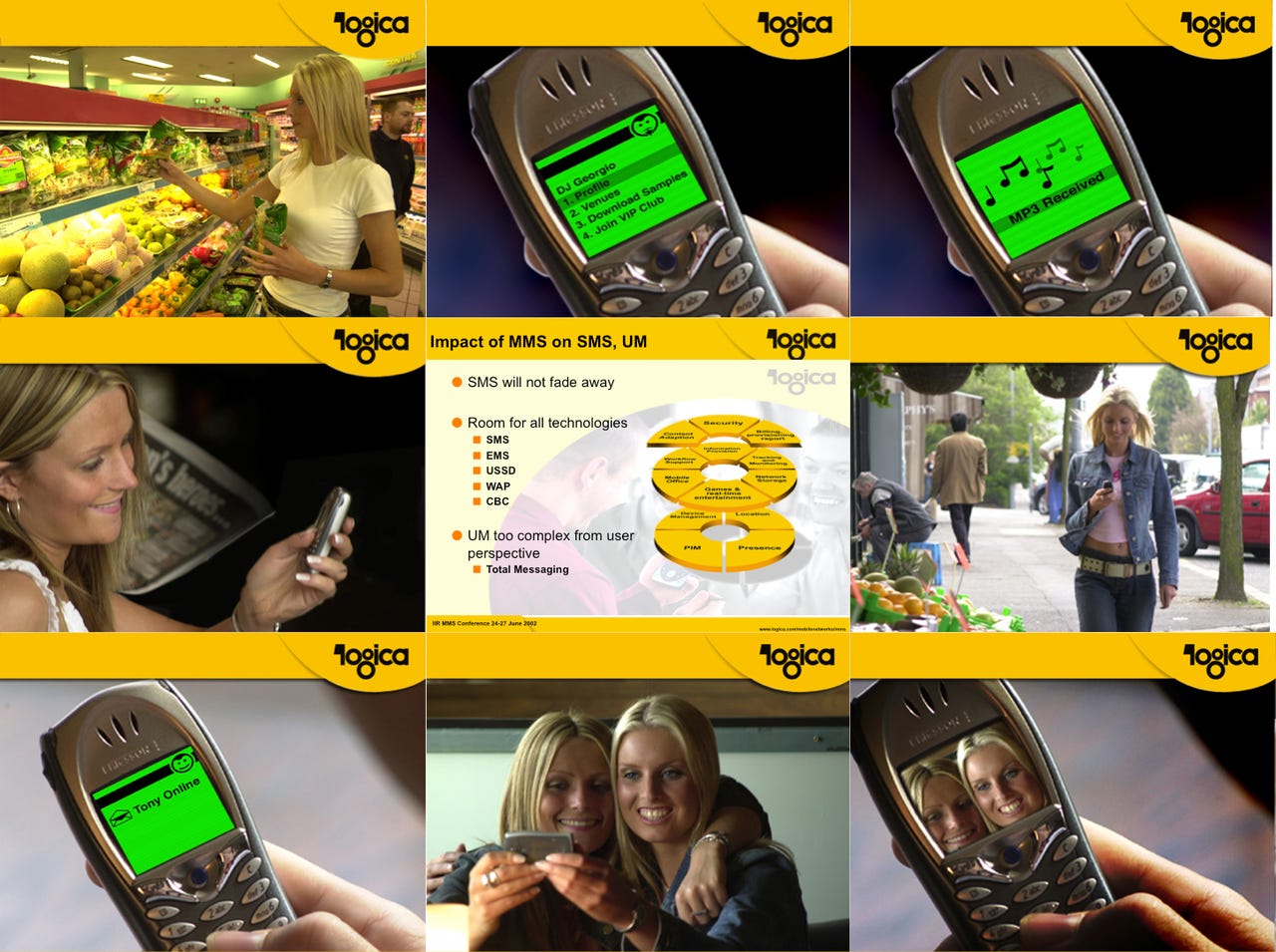Are Mobile Networks Losing the Race?
Back in the day when I worked at Logica Mobile Networks (back at the turn of the century), we provided (mobile) network elements to mobile operators. Initially these were core network elements, AUC, EIR and the like, and then expanded to messaging (SMSCs and later MMSCs), billing and prepaid systems and then into value added services.
Around 2002, in the early days of MMS, and around the time the first commercial 3G network launched, we had a presentation on the future of mobile—and in particular how new services offered by mobile operators would ‘change’ consumers lives.
Rather than the typical ‘death by bullet-points’, this deck was most purely visual. It’s a day-in-the-life story that follows a consumer from work to home, and out to a club.
In the photo-essay, we followed Tanya and looked at how services from her mobile operator could be used throughout her day.

We met Tanya at her supermarket job, were she is daydreaming of clubbing rather than stocking produce.
As she gets in her car to drive home, she receives an MMS ad from a club promoting a new DJ, with a voucher attached. Unfamiliar with the DJ, she wants to hear a sample song or two. Tanya fires up her mobile browser, which knows that she just received the voucher and so presents links to more information about that DJ. With a quick click, she can download and listen to an MP3.
Liking what she hears, Tanya invites some friends to go to the club with her (by send out text messages).
Later than night, we see Tanya walking down the street. As she nears the club, her phone notifies her she’s close. Once in the bar, she receives an IM from one of friends (Tony) that he can’t make it. So Tanya sends Tony a photo of everyone enjoying themselves to show what he’s missing.
To the audience in 2002, this was hugely ‘futuristic’, and showed a wide array of technologies working together:
- SMS
- MMS (push) messaging
- WAP portal
- MP3 download
- Web composer
- Location
- Presence and IM
- Picture messaging
It even included what I think can be claimed to be the very first ‘selfie’ taken on a mobile phone!
(Yes, many of these technologies existing in the world of the PC, but mobile was a whole different story. Ask anyone who tried to launch mobile IM services around this time. Operators’ walled gardens made this an impossibility. And don’t forget how basic mobile devices where in 2002.)
I remember that it seemed like science fiction at the time—an unimaginable future. I came across it the other day, and realised that not only is everything in it real, but also I use every bit of it every day. The mobile phone in the pictures is painfully out-of-date, but the services are right on target.
We were trying to convince the market that there was an opportunity, that consumers were ready for the services, and that all the different technologies could work together. It all came true, with one exception.
The picture we painted back then was that all of it would be provided as core services by the mobile network. A service stack, which included PIM, presence, device management, location, network-based storage, content adaption, security and billing, would be unified through a service delivery platform (SDP), and accessed via a single API for external services.
But this vision of network-based services hasn’t happened; it’s actually mobile apps, mobile features (GPS) and external services (Facebook, Foursquare etc.) that are providing the services. Devices, rather than the network, are bringing them all together for the consumer.
So I ask: did mobile networks lose their position? They had the initial vision. Why weren’t they able to execute? (The walled gardens that networks had at the time were certainly a big factor.)
However, this race is by no means won—or over. New services such as RCS show there is still room for network-based services. And of course without the networks in place, your mobile is nothing more than a hunk of plastic and metal.
Footnote: Whilst I had the good fortune to present this deck a number of times, I can’t claim any credit. I’m not a 100% sure who created it—but I’m sure much of the credit is due to Norbert Sagnard, our Head of Marketing Strategy & Communications at the time.